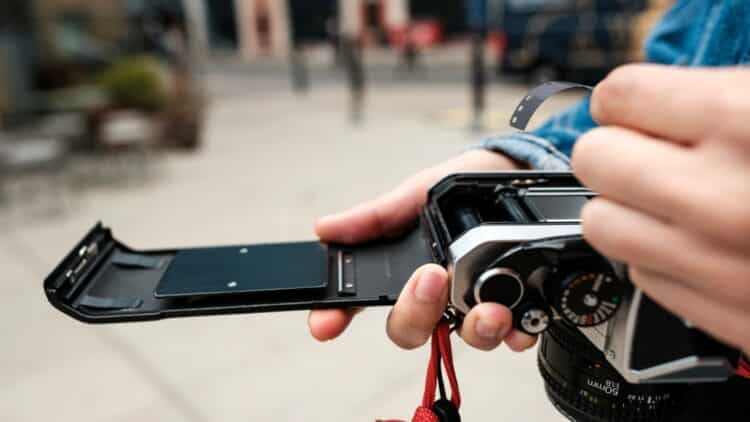I know what you’re wondering: Is this 1984? Who on earth still travels with an analog camera? Are film rolls still being manufactured? Well, believe it or not, there is still a community of photographers who cling to their beloved analog cameras. There is something about the film format that gives it a warmth and humanity that, no matter how hard we try, digital photography still lacks.
The biggest problem for traditional photographers is that they have to travel with their film rolls. Although it may not seem like it, undeveloped film is vulnerable to security scanners. The tomography that is being implemented can damage your rolls in a single pass; that’s why the TSA recommends that you keep them in your carry-on luggage and ask for them to be inspected manually by a person. If you’re traveling with an analog camera and think this might happen to you, here are some tips.
What is “film fog”?
The radiation from the security scanner affects the emulsion that the film is made of. This causes fogging, contrast loss, and color imbalance in the photograph. The higher the dose, and the more times the film is scanned, the more sensitive your roll of film will be to damage. The new CT scanners, which are more common in the United States, can damage the entire roll in a single pass. On the other hand, conventional X-rays pose less risk to film, but the damage is cumulative. That’s why we recommend that you always request a manual inspection.
If you pack your film rolls in your checked luggage, we have bad news: the X-ray scanners used to inspect checked baggage are much more powerful. Any undeveloped film or camera with film inside will be damaged. Whatever you do, you should travel with all your film rolls in your carry-on luggage to ensure that they are inspected only by the human eye.
How to get film rolls through TSA security
Carry undeveloped film rolls and cameras with film in your carry-on luggage. When you reach the security checkpoint, tell a TSA agent that you want them to inspect them manually. Do not put the film or camera in the scanner tray; declare it beforehand and hand over the film in a clear bag for visual inspection. As we said before, do not check it in, as it will not be any safer in the hold.
Believe it or not, being polite can get you a long way. Be friendly and politely say the following to the TSA staff:
“I’m carrying unprocessed photographic film. May I have a hand inspection, please?”
What about Polaroids?
Instant cameras can also become washed out or pink after scanning. That’s why manual inspection is always recommended. This doesn’t just happen with Polaroid cameras, but also with Fujifilm Instax cameras. Don’t worry about photos that have already been developed; once they’re developed, it’s not possible to degrade them.
If you are going to be traveling for a long time, we recommend that you organize your use of film rolls very well. If possible, try to travel with the camera without any film inside. In other words, finish each roll before you get to the airport. Another option is to buy film when you arrive at your destination. Experienced photographers advise using low ISOs when possible (100–400).
If you don’t have much faith in TSA personnel knowing how to handle analog cameras and film, you can bring a printout of the official website that explains how to handle photograph material. Once you arrive safely, develop your film rolls as soon as possible. Needless to say, you should keep your film rolls away from heat, humidity, and temperature variations, as these can seriously degrade the film.
Conclusion
Dear hipsters —and bohemians— who still travel with analog cameras, remember to always carry your film with you.
Don’t check your rolls of film with the rest of your luggage; take them with you hand them over and always ask for them to be inspected manually (remember to smile!). We hope you get some good photos… and that none of them are blurred.

